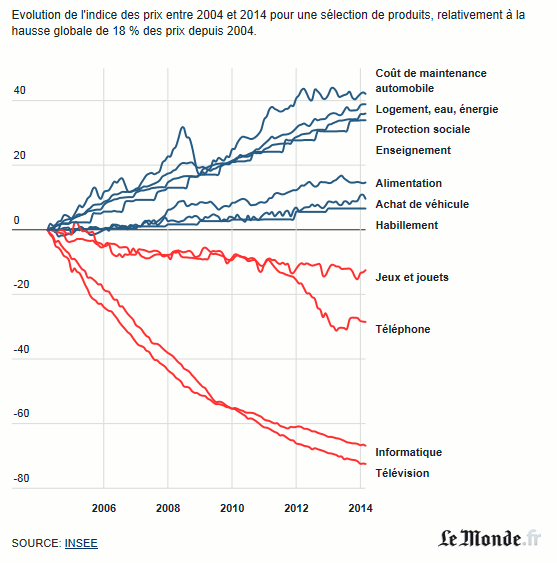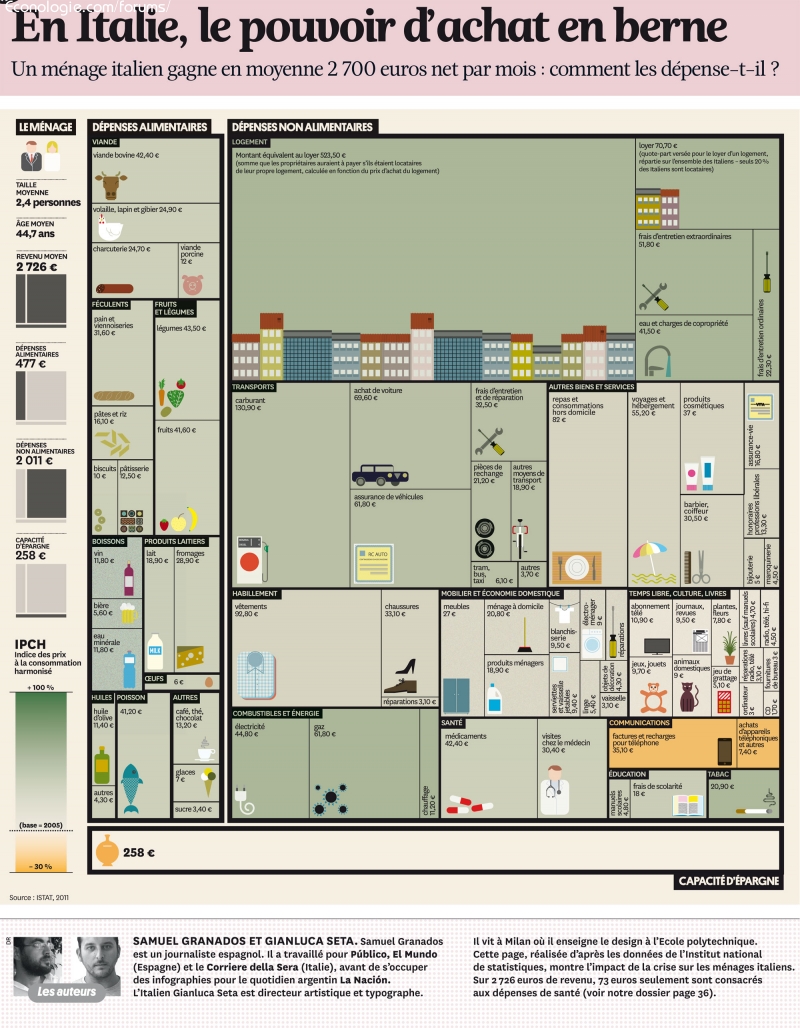In ten years, which prices have increased the most?
"Can a family with a car in the driveway, a flat screen TV and a computer connected to the Internet be considered a poor family? That's the question the New York Times asks. Indeed, the prices of these consumer goods have fallen drastically in the United States in the last decade, hiding nevertheless increases as important for other expenditures, such as education or health.
In France, the situation is the same in the last ten years. Prices for food or energy are skyrocketing while prices for computers, televisions and telephony are falling. The graph below shows the evolution of the INSEE price index for a selection of products similar to those chosen by the American daily newspaper. The clothing price index was leveled over the year to mitigate the effect of balances.
(...)

Suite: http://www.lemonde.fr/les-decodeurs/art ... 55770.html


